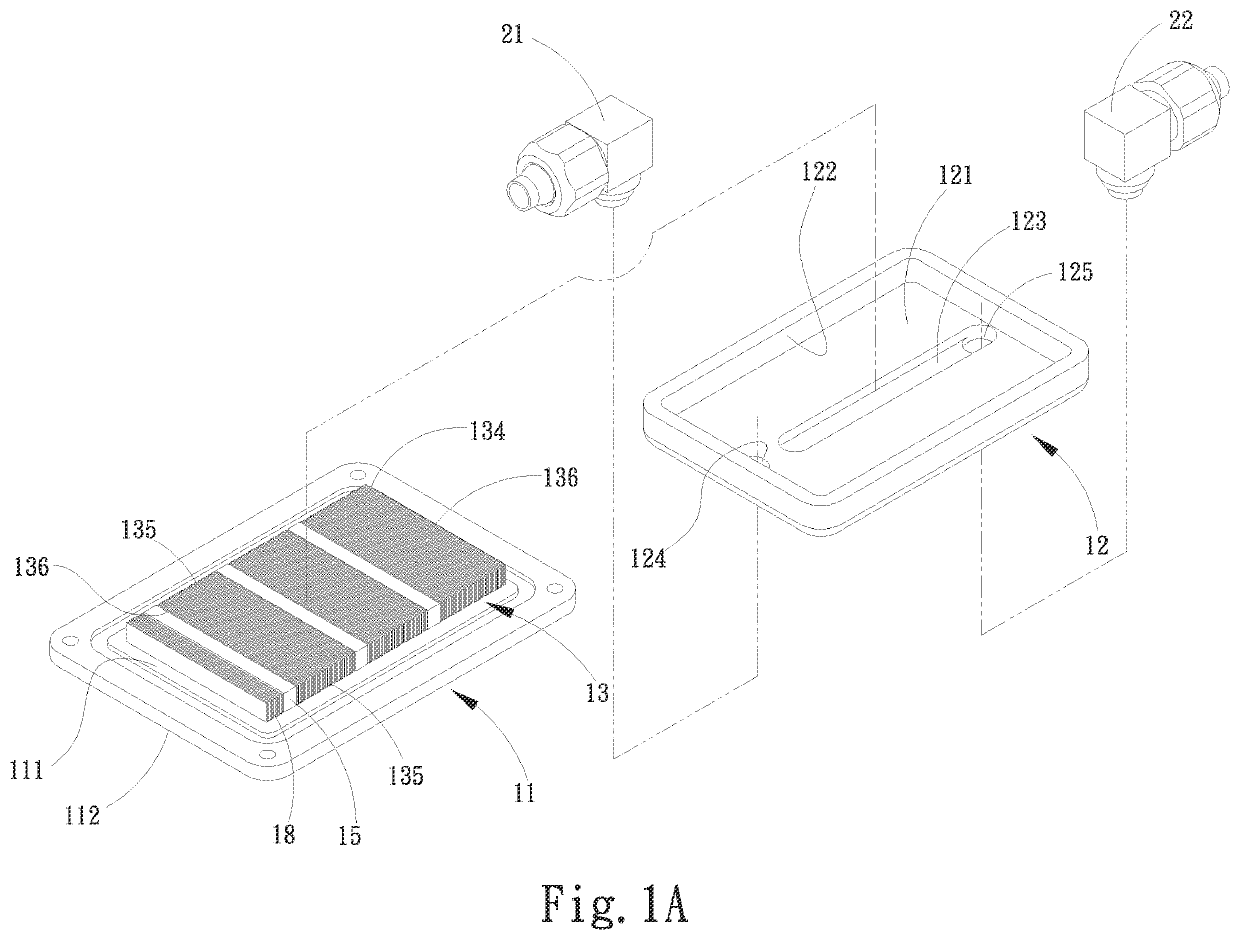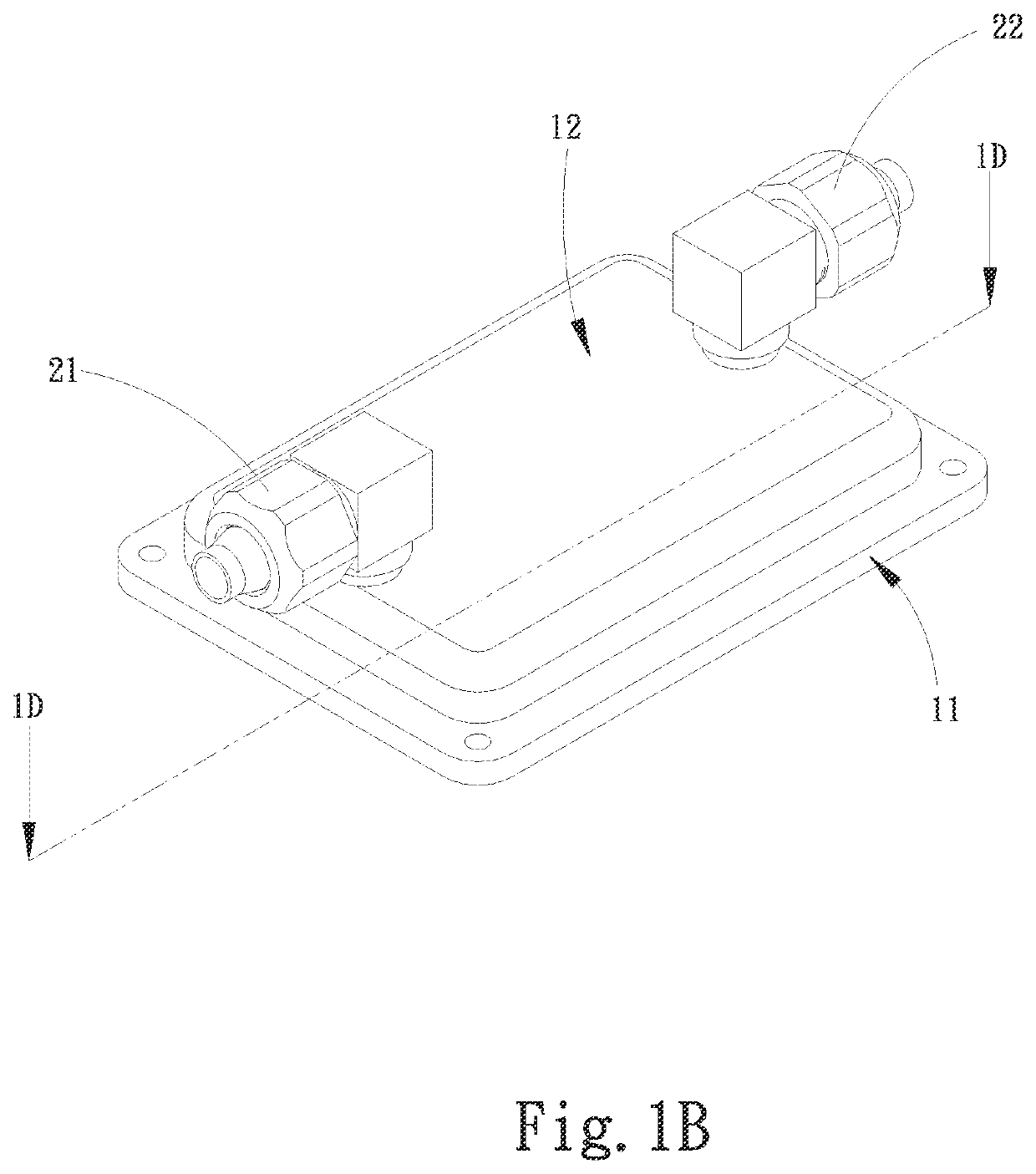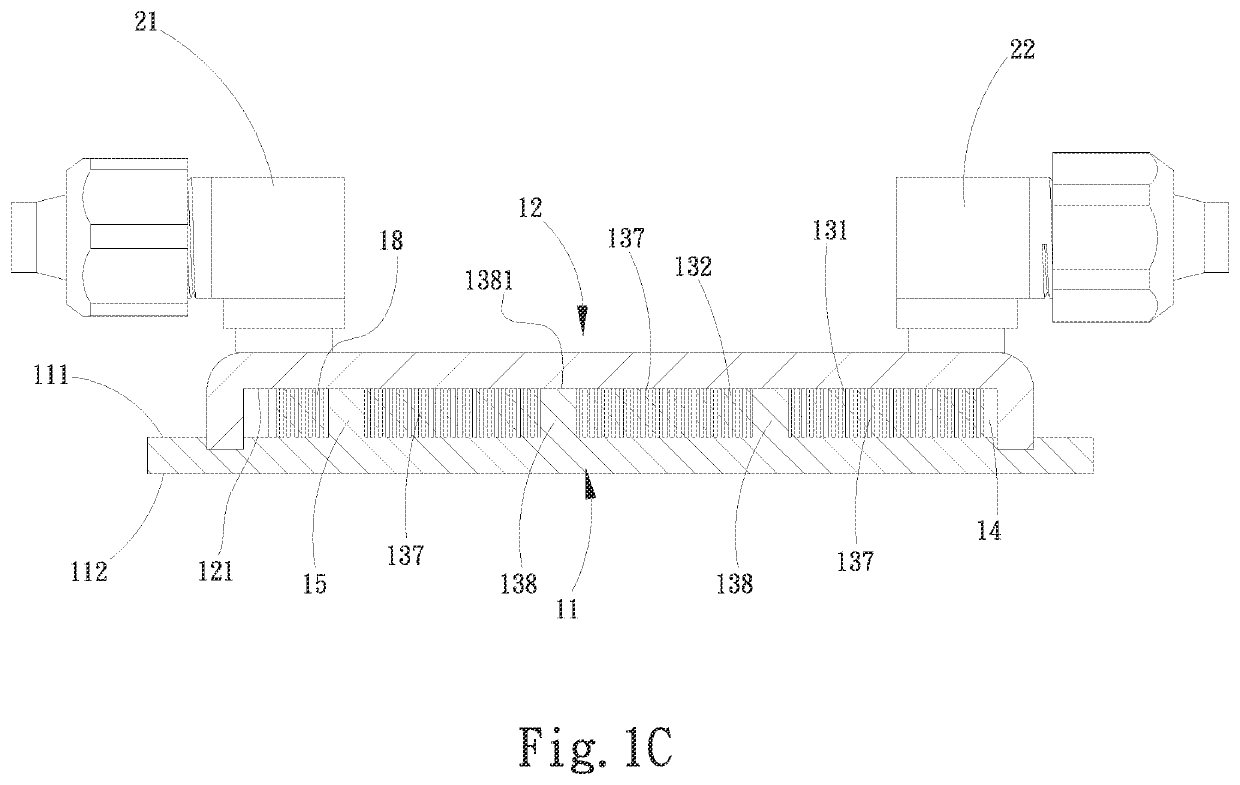Liquid-cooling heat dissipation structure
- Summary
- Abstract
- Description
- Claims
- Application Information
AI Technical Summary
Benefits of technology
Problems solved by technology
Method used
Image
Examples
Embodiment Construction
[0028]The present invention provides a liquid-cooling heat dissipation structure, for example, a liquid (water) block as a part of a liquid cooling loop. The liquid-cooling heat dissipation structure is in contact with a heat generation component to dissipate the heat of the heat generation component. The liquid-cooling heat dissipation structure is in communication with an external heat dissipation unit and / or pump via tube bodies. A stop section is disposed in a heat exchange chamber of the liquid-cooling heat dissipation structure so as to first divide the cooling liquid entering the heat exchange chamber. The divided cooling liquid flows to the periphery of a radiating fin unit and then flows to the middle of the radiating fin unit, whereby the cooling liquid is prevented from straightly passing through the radiating fin unit. Alternatively, multiple cooperative flow-stopping protrusions are disposed corresponding to the radiating fin unit to help the cooling liquid to uniformly...
PUM
 Login to View More
Login to View More Abstract
Description
Claims
Application Information
 Login to View More
Login to View More - R&D
- Intellectual Property
- Life Sciences
- Materials
- Tech Scout
- Unparalleled Data Quality
- Higher Quality Content
- 60% Fewer Hallucinations
Browse by: Latest US Patents, China's latest patents, Technical Efficacy Thesaurus, Application Domain, Technology Topic, Popular Technical Reports.
© 2025 PatSnap. All rights reserved.Legal|Privacy policy|Modern Slavery Act Transparency Statement|Sitemap|About US| Contact US: help@patsnap.com



